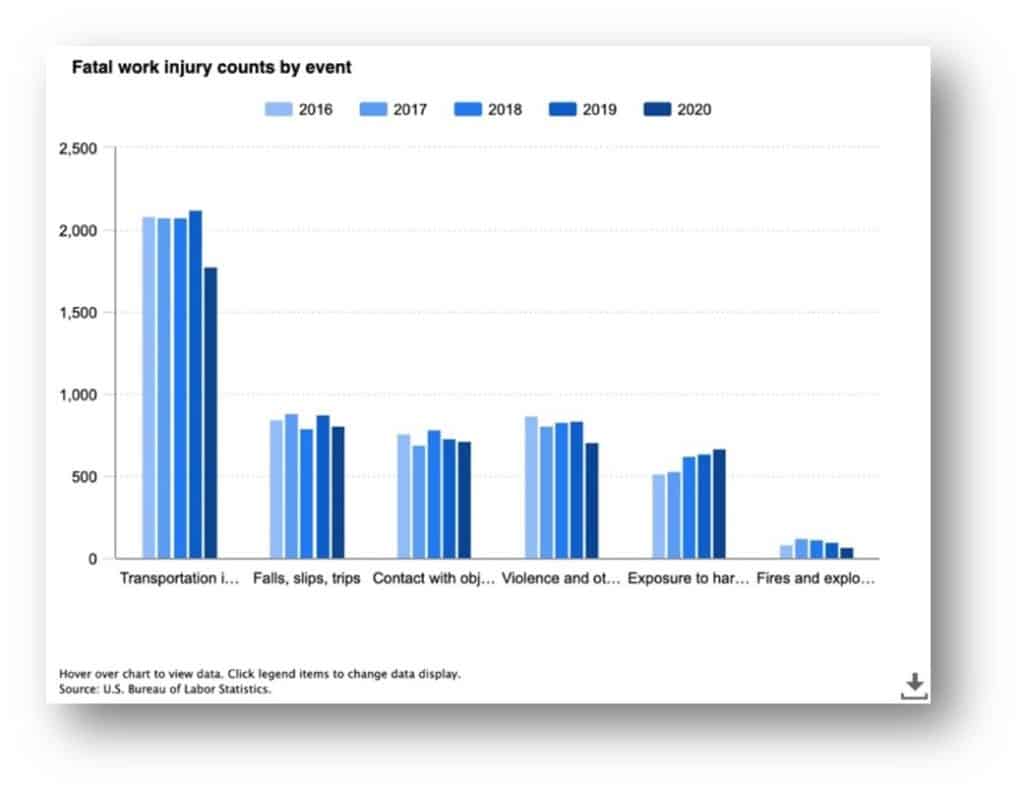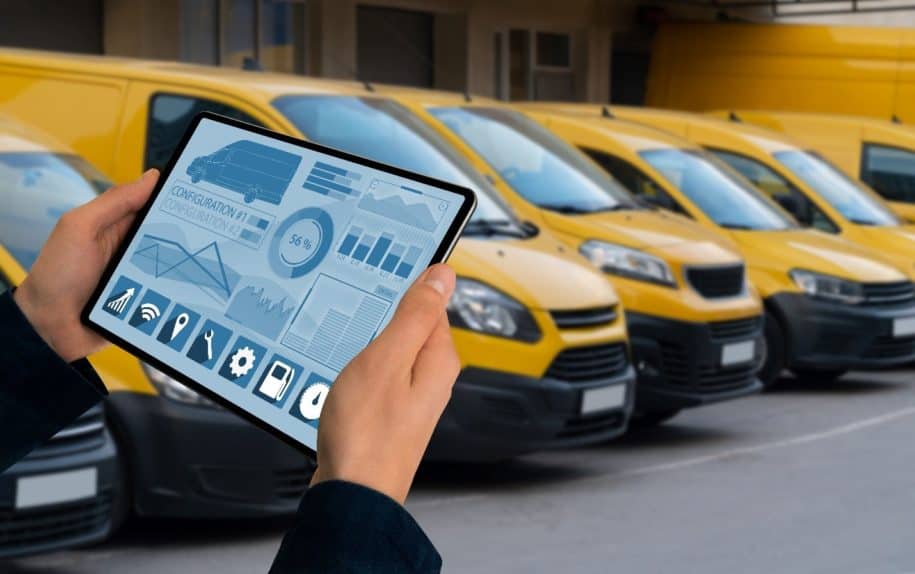A fleet vehicle refers to private or company-owned vehicles such as cars, trucks, vans, and heavy equipment. Fleet vehicles make up a large portion of an organization’s assets and they need to be adequately managed to save on business expenses and ensure compliance. Fleet vehicle management is a challenging task for many organizations as it involves a proper understanding of daily operations that include:
- avoiding vehicle downtimes
- managing maintenance inventory
- maintaining records and documentation
- preserving the asset
- preventing incidents
- reducing insurance premiums
- operating the fleet within budget
Outsourcing the management of fleet vehicles is a financially viable option for organizations with smaller fleets. However, if an organization has over 50 vehicles, then having an internal fleet management program gives the business better control over its fleet vehicles and (depending on the effectiveness of the internal program) offers a better return on investment. Standard fleet vehicle management systems can be confusing and unwieldy, making the control of these assets more difficult. Procuring a fleet vehicle management software empowers users to more effectively tame the challenges faced by organizations and vehicle fleet managers.
U.S. Bureau of Labor Statistics on work-related vehicle casualties.
The U.S. Bureau of Labor Statistics reveals that, in contrast to other occupational injuries, work-related injuries connected to transportation events consistently happen two times as much. Between the years of 2016 and 2019, there were over 2,000 recorded transportation incidents.
When such events occur, employers must simultaneously handle property damage reports, incident investigations, personnel and vehicle insurance claims, and vehicle repairs or replacement. Not only would asset management software house all this information in one digital storehouse, but it also has configurable compliance and inspection forms and can easily export reports to regulatory parties.
Considering the high risk involved with operating fleet vehicles, OSHA and NIOSH have developed guidelines for employers, both of which emphasize the need for employers to implement an effective fleet vehicle management program.
Using an outdated system—a fleet vehicle manager’s nightmare.
Keeping track of physical assets using spreadsheets and hardcopy documentation can be stressful, time-draining, and prone to human error. Tracking requirements such as the number of miles driven, the date and time the vehicle was started, and the reason for the trip can be entered and checked much faster with an automated system. Physical assets such as spare parts, oil, and fuel are constantly being used up and must be monitored daily for efficient operations. This inventory data, as well as the vehicles they support, can easily be maintained from a centralized location with asset management software.

Manual data management could result in catastrophic errors.
Furthermore, requiring workers to manually conduct administrative tasks such as submitting hours worked, costs, and location information detracts from work performance. Additionally, when employees are reliant on processes that are not user-friendly or easily accessible means that data submitted is more likely to be inconsistent, vague, or unable to be verified. It is more likely for employees to incorporate inaccuracies in physical records of data (such as location, incident reports, inventory) than in software modules. While the potential for human error exists in every method of data entry, it is significantly decreased by employing an asset management software with native applications that require minimal user training and are mobile-friendly. With supply shortages, increasing fuel costs, and a depleted workforce, tools designed to ease the workload and diminish the potential to exceed budgetary spending are more necessary than ever.
Organize and track details.
Another benefit of managing a fleet with asset management software is the ability to create and install QR Codes and Barcodes for each vehicle. This feature enables users and inspectors to quickly access critical information such as vehicle manuals, inspection records, insurance, license, and registration details of the vehicle. At the end of the day, safety requires the assurance of due diligence in complying with the applicable legislation (whether federal, cross-boundary, or state) that relates to all company assets, including vehicles. When it comes to meeting compliance, electronic documentation streamlines every part of the process.
Before investing, ask the right questions.
When considering implementation of EH&S management software for fleet vehicle management, there are a few important questions to answer:
- Would real-time tracking or monthly reporting be beneficial to the company?
- Is an automated system currently in place to keep track of data?
- What kind of information gathering would be beneficial to operations?
- What is the budget?
- Will new software integrate with existing IT infrastructure?
- Is the software customizable to suit various business requirements?
- Does the system enable management of vehicle documents and records?
Quality asset management software will include customizable features to record and store:
- Inventory
- Asset details (for vehicles- make, model, year, VIN)
- Documentation (for vehicles- insurance, manual, license, registration)
- Inspection schedules and history
- Asset user details (contact information, license, and certification progress report)
The purpose of asset management software is to reduce the potential for risks (such as documentation errors) and to empower employers through the use of a hassle-free, automated, cloud-based system.
A completely customizable solution for managing physical assets, like SafetyStratus’ Asset Management Module, makes it easy to keep track of every piece of equipment an organization uses, and control its location in real-time. Using this management tool, asset managers are empowered to make the most efficient physical resource decisions so workers can spend more time getting their jobs done. A cloud-based application that centralizes asset management into a single location allows one to create, register, track, and oversee agreements and reports on physical assets. The easy-to-use interface makes managing, tracking, and reporting processes easier to understand and automate. Vehicle compliance information is available at the touch of a button and can be shared internally or externally quickly and securely. Greater security with sensitive data, improved compliance management, and access to information when it is needed the most all combine to save more time than manual processes and allow employees to focus their efforts where they are needed most—within their field of expertise.
Author Bio
The SafetyStratus Research Advisory Group (RAG) brings together thought leaders from the global environmental, health, and safety community to promote best practices and provide key insights in the profession and the industries they serve. The Research Advisory Group also advocates, where practical, the intersection of and advances with the use of technology, such as the SafetyStratus enterprise EHS software platform. Group membership consists of representatives from across varied disciplines and market sectors as well as select members of the SafetyStratus team.
The primary objectives of the SafetyStratus RAG partnership are to:
- Build a strategic partnership between EHS practitioners and the SafetyStratus team.
- Provide engaging and practical content to the global EHS community.
- Provide discipline and market feedback specific to SafetyStratus products and services.
While the objectives of the RAG are varied, the primary public-facing outcome will be available through engaging and practical content found on the SafetyStratus resource pages. Various articles, papers, and other valuable resources will be produced and shared as part of an ongoing effort to cultivate a robust community. Ultimately, the SafetyStratus RAG will expand to have a broader reach and provide opportunities for more inclusion by all interested EHS professionals in a collaborative community environment.



